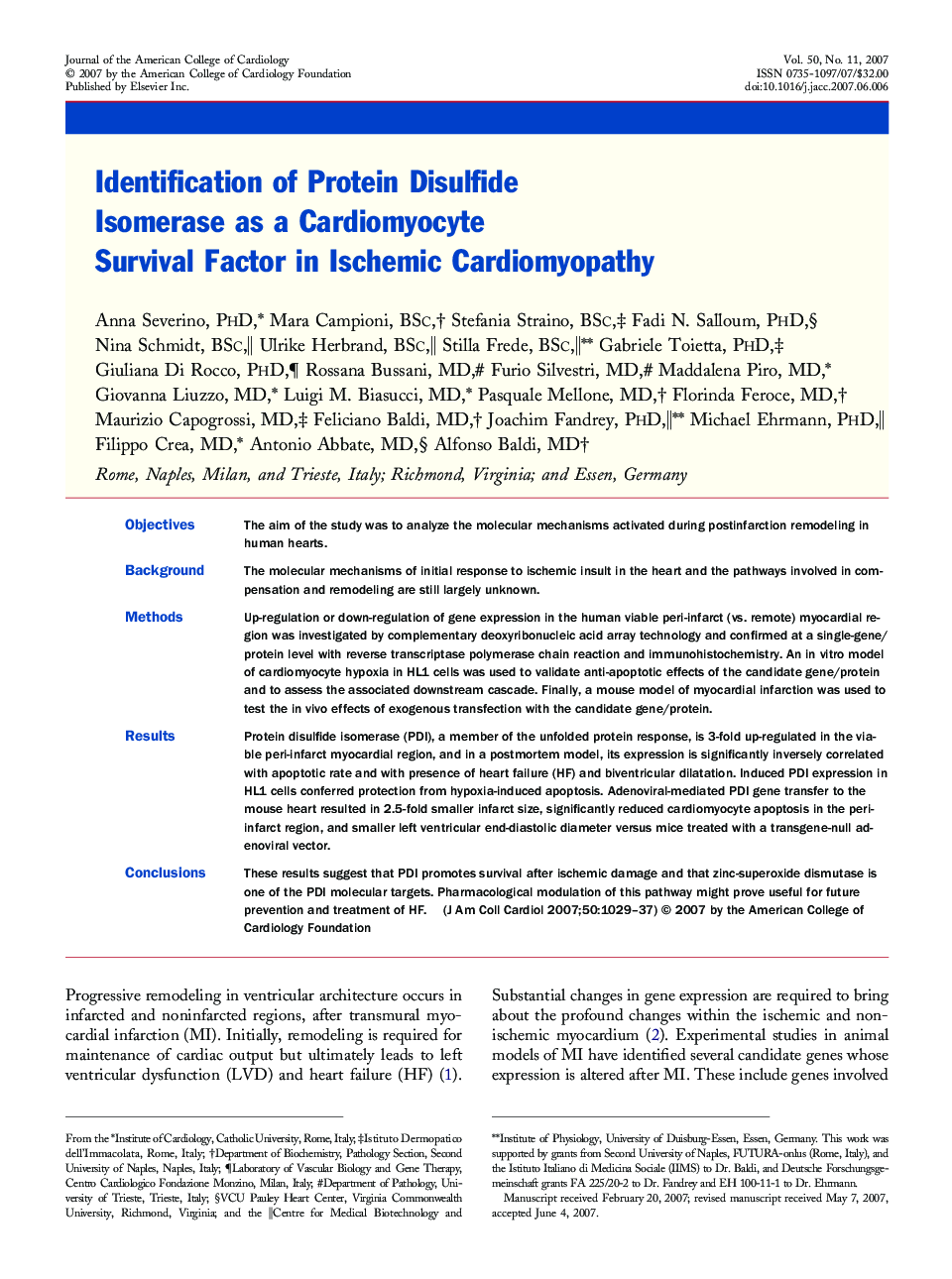| Article ID | Journal | Published Year | Pages | File Type |
|---|---|---|---|---|
| 2952952 | Journal of the American College of Cardiology | 2007 | 9 Pages |
ObjectivesThe aim of the study was to analyze the molecular mechanisms activated during postinfarction remodeling in human hearts.BackgroundThe molecular mechanisms of initial response to ischemic insult in the heart and the pathways involved in compensation and remodeling are still largely unknown.MethodsUp-regulation or down-regulation of gene expression in the human viable peri-infarct (vs. remote) myocardial region was investigated by complementary deoxyribonucleic acid array technology and confirmed at a single-gene/protein level with reverse transcriptase polymerase chain reaction and immunohistochemistry. An in vitro model of cardiomyocyte hypoxia in HL1 cells was used to validate anti-apoptotic effects of the candidate gene/protein and to assess the associated downstream cascade. Finally, a mouse model of myocardial infarction was used to test the in vivo effects of exogenous transfection with the candidate gene/protein.ResultsProtein disulfide isomerase (PDI), a member of the unfolded protein response, is 3-fold up-regulated in the viable peri-infarct myocardial region, and in a postmortem model, its expression is significantly inversely correlated with apoptotic rate and with presence of heart failure (HF) and biventricular dilatation. Induced PDI expression in HL1 cells conferred protection from hypoxia-induced apoptosis. Adenoviral-mediated PDI gene transfer to the mouse heart resulted in 2.5-fold smaller infarct size, significantly reduced cardiomyocyte apoptosis in the peri-infarct region, and smaller left ventricular end-diastolic diameter versus mice treated with a transgene-null adenoviral vector.ConclusionsThese results suggest that PDI promotes survival after ischemic damage and that zinc-superoxide dismutase is one of the PDI molecular targets. Pharmacological modulation of this pathway might prove useful for future prevention and treatment of HF.
